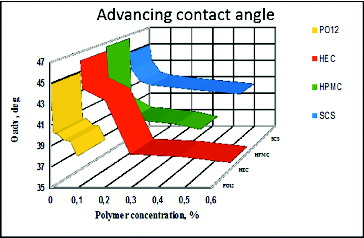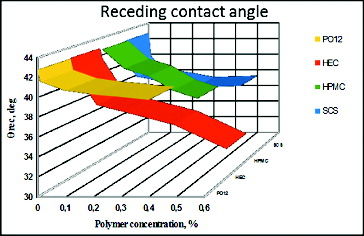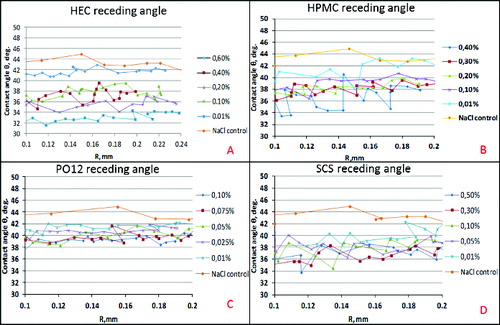Figures & data
Table 1. Main characteristics of polymers.
Figure 1. Dependence of the equilibrium contact angle (θ) between static air bubble and solid surface covered with air-damaged SIRC on polymer concentration. Zero per cent polymer concentration corresponds to control, i.e. pure saline solution with no polymer dissolved.

Figure 2. Dependence of the advancing contact angle (θ) between air bubble at contraction and solid surface covered with air-damaged SIRC on polymer concentration. Zero per cent polymer concentration corresponds to control, i.e. pure saline solution with no polymer dissolved.

Figure 3. Dependence of the receding contact angle between air bubble at expansion and solid surface covered with air-damaged SIRC on polymer concentration. Zero per cent polymer concentration corresponds to control, i.e. pure saline solution with no polymer dissolved.

Table 2. Dependence of the average contact angle on the polymers concentration.


